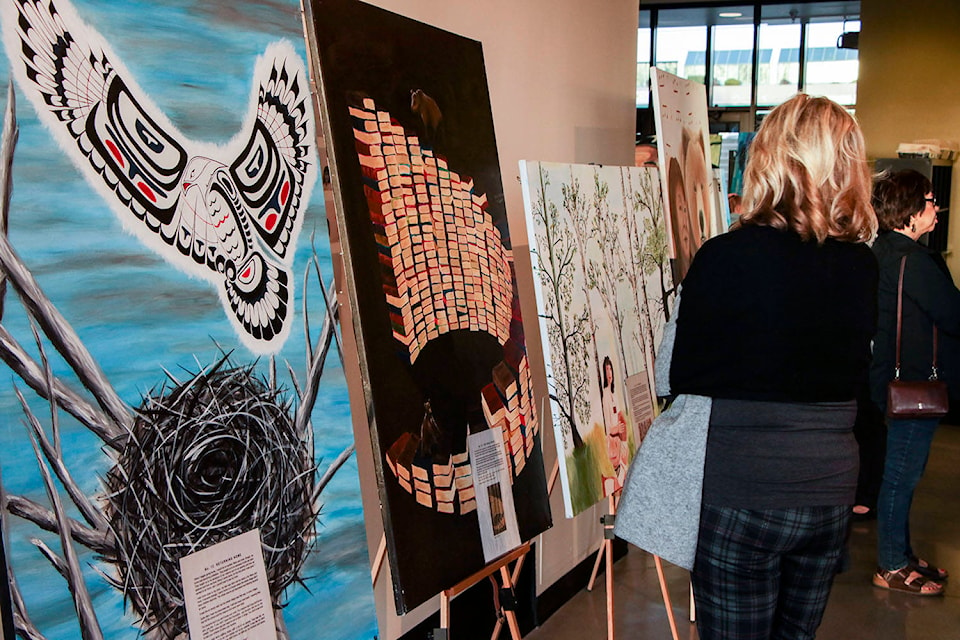Beatrice Silver has always had a rebellious heart.
A member of the Sumas First Nation, Silver is the author of the recently published book Lex̱éywa: I Pass the Torch to You, which tells the story of her experience with St. Mary’s Mission Indian Residential School in Mission.
The rebellion flowing through her veins, Silver says, helped her survive the experience.
“When we went to residential school, we were mostly known by numbers, and I tell you in my book I don’t even remember that number. I was not a number – I was Beatrice Silver – and from day one, that’s how I was when I got there. I bucked the system, and as a result, I was punished a lot,” Silver says.
“I wasn’t into drugs and drinking; it wasn’t that way at all. I just was not going to let you or anybody else tell me what I could do or what I couldn’t do.”
RELATED: Belonging key to improving Indigenous grad rates
RELATED: Abbotsford school facilities naming process to include Indigenous voice
But despite her experience, Silver is optimistic. She says she’s seeing some strides in improving the status of Indigenous Peoples in Canada in recent years – not the least of which is in education.
Where the residential school system targeted children to erase Indigenous cultures – called cultural genocide by Senator Murray Sinclair, chairman of the Truth and Reconciliation Commission – Silver now sees education as one of the foremost tools in reconciliation.
“Think of it as a circle,” Silver says. “It’s coming back now, and we’re beginning with our children, our babies.”
Silver recently got first-hand experience with recent updates to the B.C. curriculum – which emphasizes Indigenous issues and culture – in the Abbotsford School District, when she shared her story with a group of students in an art activism class at Robert Bateman Secondary School, talks that laid the foundation for her book.
“It was amazing,” says Taryn MacDonald, one of two teachers of the course. “I think it was pretty exhausting for her, but she handled it really well. The kids handled it really well, and it was transformative, for sure, to hear it come straight from her.”
During the course, each student based a painting on an excerpt from several weeks of daily talks from Silver. Those paintings were all incorporated into Silver’s book as title pages for each chapter, and one painting of a yellow rose made the cover of the book.
The art activism course isn’t exclusive to tried-and-true artists – you’d never know it from looking at the paintings, but some students hadn’t even picked up a paintbrush before.
“For the kids that didn’t have a lot of technical skill, we just gave them a lot of coaching. It was nice, because there are two of us teaching, so we had a pretty good handle on coaching them through it,” MacDonald says.
Silver said diving deep into her past traumas was challenging, even causing migraines, but she added that she was encouraged by the openness of the students and teachers to hearing a dark part of Canadian history that has often been hidden away.
“They were just amazing, amazing teachers to take this on, because it wasn’t just, ‘Oh, let’s do art.’ This was real, true, hardcore stuff they had to learn about and then paint from their hearts. They felt what they saw,” Silver said.
That was particularly encouraging for Silver because most of the students were not Indigenous, so the truth of her experience was getting out beyond Indigenous communities.
“I was so impressed with the attention they paid and the respect and the hunger for more,” Silver said, adding that she encouraged questions and interactions from the students. “They wanted to know really what it was like, what happened, (and) I told them.”
What’s more, Silver said she was impressed with how well-prepared the students were with knowledge of the residential school system, something that has had new emphasis in the B.C. curriculum.
But Silver added that she feels the Abbotsford School District takes Indigenous issues and education to another level, with initiatives like the Ray and Millie Silver Aboriginal Library.
“What the schools have done in Abbotsford is take the bull by the horns and dance with it, rather than fight it,” Silver said. “They took our history, as bad as it is, the Canadian history, and accepted it, and said, ‘This is what happened; now how can we go about reconciling?’ ”
Silver eventually became a teacher – the only Indigenous teacher in the Fraser Valley at the time, as far as she knows. And for a time, she was elected chief of the Sumas First Nation and is now running for a spot on council.
She says her story of success since residential schools, despite the odds, will be the subject of a future follow-up book.
Lex̱éywa: I Pass the Torch to You is available at electromagneticprint.com.
Find more of our coverage on the Abbotsford School District here.
